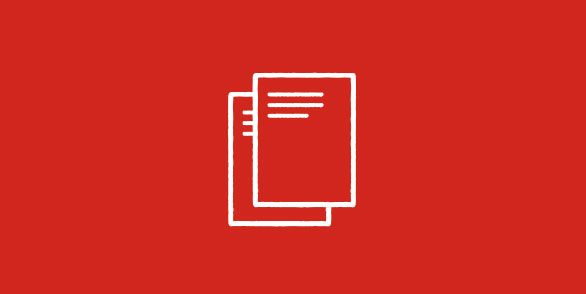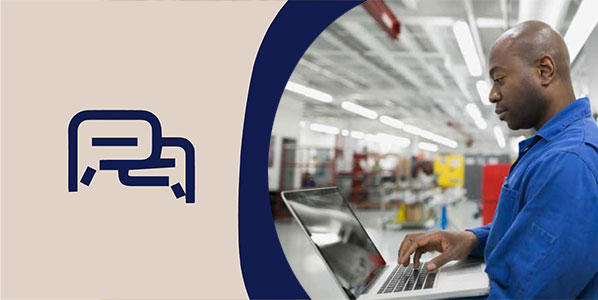insight
Employee life cycle stages and best practices for HR professionals
Published on 13 Nov. 2025 - Reading time: 8-10 mins
Table of Contents
The employee life cycle is an employee’s complete journey with your organisation. It covers all their experiences with your company — from the moment they first become aware of your organisation, all the way up to their emotional last day on the job.
Optimising your employee life cycle is a great way to improve their engagement, reduce turnover and keep your people motivated to deliver their best. Let’s go over some of the best practices for each stage of that journey, and find out how HR solutions can help you create a more productive and positive workplace.
Stages of the employee life cycle
The employee life cycle model has 10 key stages:
- Attraction
- Recruitment
- Onboarding
- Development
- Engagement
- Retention
- Recognition
- Offboarding
- Exit
- Advocacy

Attraction and recruitment
Attracting and recruiting employees is all about finding the right fit for your company. Although often used interchangeably, talent acquisition and recruitment are different. While recruitment aims to fill open positions now, talent acquisition builds a longer term relationship to give you a pipeline of skilled candidates for the future.
Best practices
Cliché or not, they say you never get a second chance to make a good first impression. So, HR professionals should put themselves in the applicant’s shoes and aim to make this opening stage a great experience for them, from job listing to interviewing and final selection. Bear in mind that how your company presents itself and interacts with potential employees can make the difference between attracting top talent and losing them to competitors. Recruitment best practices include:
- Refine job descriptions to attract the right applicants
- Communicate clearly and provide timely updates
- Ensure the application process is straightforward and inclusive
- Use a Recruitment Management System (RMS) to support the process
- Provide feedback to unsuccessful applicants
How ADP helps
ADP's talent acquisition solution streamlines everything from job postings to applicant tracking, making it easy to deliver a first-class employee experience and attract top talent. HR teams can also save time by automating key recruiting and hiring tasks and make data-driven improvements by tracking important metrics like time-to-hire.
Onboarding
Onboarding aims to make the transition from hiring to first day seamless. In this way, your newcomers feel welcome, confident and ready to start their new job. A comprehensive onboarding process also saves managers time getting new starters up to speed.
Onboarding best practices
Your should pre-empt whatever new hires might need, whether that’s clarifying job expectations or organising training. Keep in mind, however, that onboarding can take time — often up to three months. Onboarding best practices include:
- Set up accounts, permissions, tools and so on before day one
- Schedule check-ins during the first 90 days
- Provide training and orientation sessions
- Assign a mentor or buddy for support
- Utilise self-service portals and digital forms
How ADP helps
ADP onboarding solutions make it easy to create a structured, digital onboarding experience that reduces paperwork and admin for both your HR team and new staff. The system also integrates seamlessly with HR and payroll, keeps sensitive data secure and automates compliance processes for hassle-free onboarding.
Development and engagement
You’ve worked hard to attract the best people, this stage is all about keeping them happy by investing in their growth, creating a positive culture and keeping staff motivated. Whether it’s offering training courses or listening to employee feedback, developing and engaging with staff is a proactive process — it won’t happen by itself.
Development and engagement best practices
The aim of this stage is to make employees feel valued, productive and on track with their career goals. As we’ve said, HR leaders should be proactive, so, for example, a mentoring scheme can help win back any disillusioned employees. Here are five development and performance management best practices:
- Create training, upskilling and reskilling programmes
- Conduct regular performance reviews and develop career paths
- Provide employee training and development opportunities
- Promote people to leadership from within
- Ask employees for feedback and implement their suggestions
How ADP helps
ADP talent management supports learning, performance management and leadership development, helping you deliver tailored training programmes and assess individual strengths. HR teams can also track performance, identify skills gaps and measure employee engagement all in one platform.
Retention and recognition
Employee retention is about keeping your best people on board for the long term. Overlooking this stage of the employee life cycle can cause top performers to jump ship to competitors. That’s why continuing to support and show appreciation for staff is key to business success.
Retention and recognition best practices
Your HR retention strategy should focus on highlighting employee value and promoting inclusion, flexibility and employee well-being. The goal is to keep your team happy and committed because high staff turnover is both costly and disruptive. Here are six retention best practices:
- Regularly review and adjust pay packages
- Offer flexible work options for better work-life balance
- Recognise achievements both within the company and publicly
- Create competitive benefits and rewards programmes
- Use HR analytics for retention to spot trends
How ADP helps
ADP payroll solutions ensure employees are paid accurately and on time, while HR Insights allows managers to analyse performance and workforce data to identify potential issues, such as skills gaps and high turnover. Automated dashboards also make it easy to track and celebrate employee achievements.
Offboarding and exit
A good offboarding and exit process helps protect your employer brand, keeps the door open for people to rejoin you in the future and ensures valuable knowledge doesn’t walk out with whoever’s leaving.
Offboarding and exit best practices
The goal of this stage is to make the transition as straightforward as possible. Ideally, you want people to leave on good terms and continue advocating for your company. So, don’t forget to organise a farewell event to celebrate their time with you. Offboarding best practices include:
- Organise a handover and any necessary training for other staff
- Conduct a detailed exit interview to gather feedback
- Set up a knowledge transfer processes
- Issue any necessary documents, including P45 and final payslip
- Schedule equipment returns and revoke system access
How ADP helps
ADP payroll software automates offboarding tasks, including calculating final pay, generating the P45 and ensuring your compliance with HMRC regulations. As a comprehensive Human Capital Management (HCM) system, ADP also allows you to manage all employee information in a single place, making it easy to update records and deactivate accounts.
Optimise your employee life cycle with ADP
From even before the day a worker joins your organisation to beyond the day they leave, optimising their lifecycle at your company helps your business in a variety of ways. These range from recruiting and retaining top talent to driving business success by boosting productivity, strengthening company culture and increasing both employee satisfaction and engagement.
ADP support every stage of an employee’s journey — from talent acquisition and seamless onboarding to automated payroll and compliant offboarding — to help your HR team perfect their employee life cycle.
Frequently asked questions about the employee life cycle
What is the employee lifecycle?
Put simply, it is the journey someone takes with your company, from the moment they first see the company name all the way up to their last day (and beyond). It helps map out every key stage of their experience along the way.
Why is understanding the employee lifecycle important for HR?
Understanding the your workforce lifecycle makes it much easier for HR to create great experiences at every stage. And great employee experiences lead to more engagement, higher retention and increased productivity.
What are the key stages of the employee lifecycle model?
The employee life cycle model has 10 key stages: attraction, recruitment, onboarding, development, engagement, retention, recognition, offboarding, exit, advocacy. Keep in mind though that different models may combine or exclude various stages.
How does HR technology support the employee lifecycle?
HR technology in the employee life cycle saves time and drives data-backed decisions by not only automating routine tasks but also providing better insights. It gives HR teams the tools they need to make every stage a great experience.
How does employer branding affect the employee lifecycle?
Employer branding shapes how both potential and current employees feel about working for your company, making it key to engagement and loyalty. In other words, a strong employer brand draws in the right people and makes them want to stay.
Employee life cycle vs employee journey?
The employee lifecycle looks at the key stages someone goes through at your company, while the employee journey focuses on what they actually experience during those stages. You can think of the employee life cycle like a roadmap and the employee journey like the day-to-day travel on that road.



